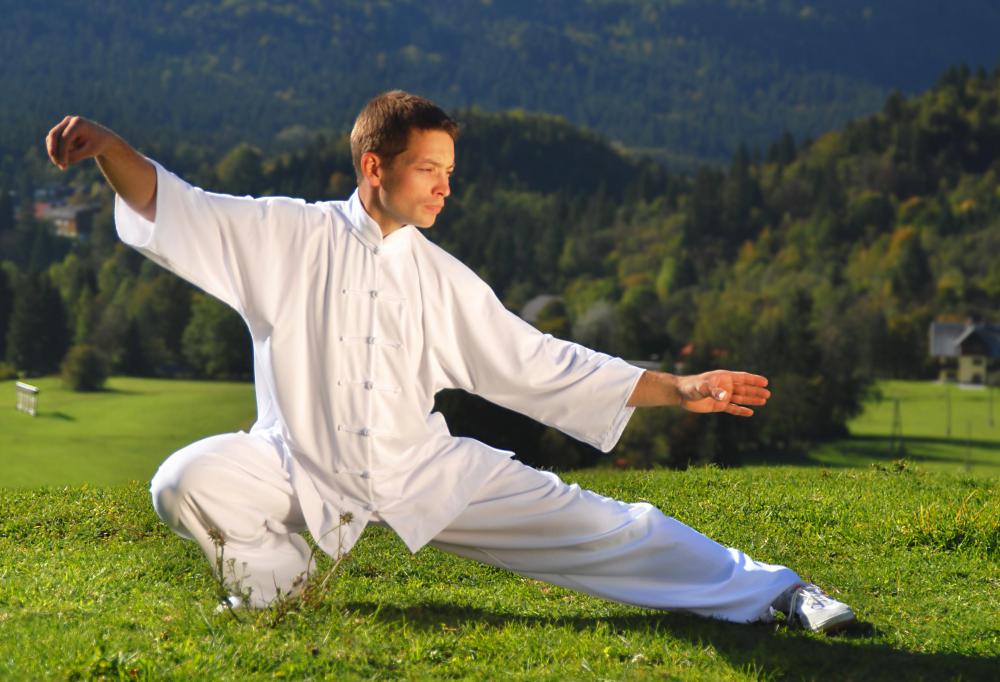At WiseGEEK, we're committed to delivering accurate, trustworthy information. Our expert-authored content is rigorously fact-checked and sourced from credible authorities. Discover how we uphold the highest standards in providing you with reliable knowledge.
What is the Connection Between Tai Chi and Qigong?
Tai chi and qigong are both traditional forms of Chinese movement with ancient origins. Both practices typically combine slow movements with relaxed, deep breathing to reduce stress, lower blood pressure, and improve posture, balance and flexibility. Tai chi and qigong have both become known throughout the world as ways to help develop a healthier body overall. Specific differences can be drawn, however, between the two practices.
The basic idea of qigong is that the body’s energy flow — called chi or qi — can be increased through slow, gentle exercises and deep breathing, visualization or meditation, and self-massage. Most types of qigong use simple movements and repeat one or several over and over again. The repetition of one movement along with deep breathing and meditation is intended to be relaxing during practice and to improve vital energy over time. Having free-flowing movements is more important in qigong than having the correct form of the movements. It is acceptable for students to make up their own movements.

Tai chi is technically a form of qigong, because tai chi also uses slow, continuous movements and relaxing breathing to increase energy flow and improve overall health. The movements in tai chi tend to be more complex than those in other forms of qigong, however, and it is generally not acceptable to make up movements. Students of tai chi often must learn, practice and remember long forms of precise, complex movements. Tai chi requires concentration to remember the forms and, therefore, it can help with anti-aging by keeping the brain active. Its complexity makes it much more difficult to learn tai chi effectively from a video or book, whereas the free-flowing qigong can more easily be learned in these ways.
Breathing is taught in different ways in tai chi and qigong. In qigong, slow and rhythmic abdominal breathing is taught from the very first class. In tai chi, the concentration is on the forms, with breathing expected to be learned through the years.

One reason for these differences is that tai chi and qigong have different origins. Tai chi began as a martial art; therefore, many of its postures imitate precise fighting stances, even when performed slowly. Qigong has more of a philosophical origin with the goal of keeping energy flowing and eliminating blockages; therefore, its free-flowing movements make sense. When a practitioner of tai chi takes one posture from a tai chi form and repeats it over and over, the practice is then called tai chi qigong.
AS FEATURED ON:
AS FEATURED ON:












Discuss this Article
Post your comments